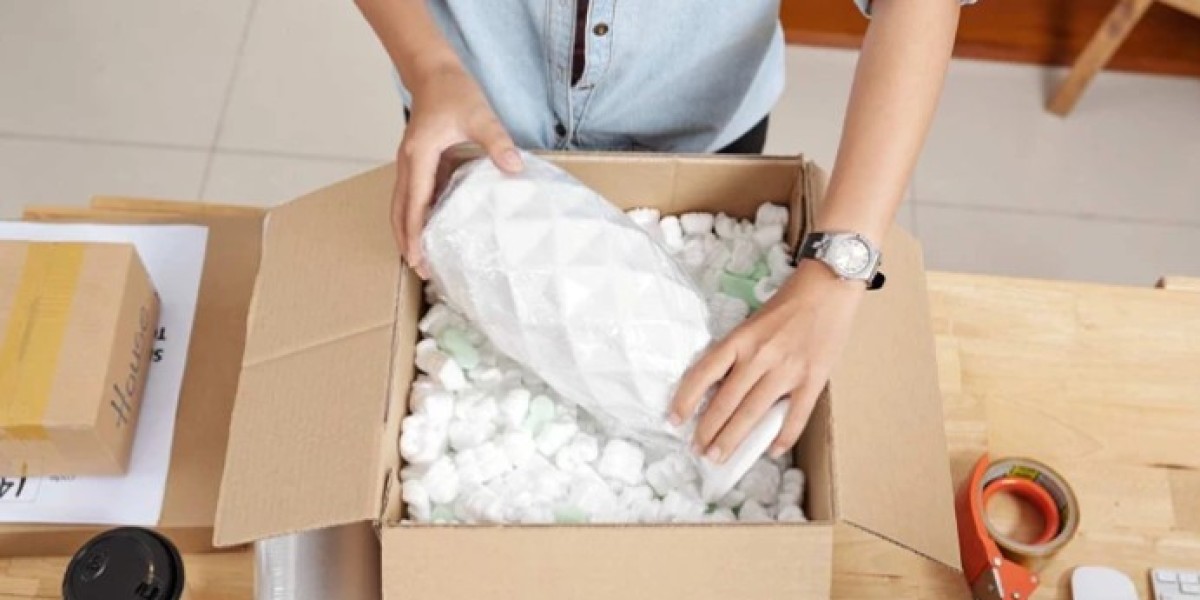Shipping fragile glass items comes with a unique set of challenges. Whether it’s glass bottles, vases, jars, or decorative pieces, the risk of breakage is significantly high without the proper materials. As eCommerce continues to grow in 2025, businesses and individuals alike must prioritize durability, cushioning, and structure when selecting protective packaging for glass.
In this article, we explore the top 7 packaging materials that offer excellent protection during transit and ensure fragile items arrive at their destination intact. We'll also cover essential tips and insights to help improve your overall glass packaging strategy.
1. Corrugated Cardboard Boxes
Corrugated cardboard is the foundation of most protective shipping setups. Its multilayer structure—with an inner fluted layer sandwiched between two flat linerboards—provides rigidity and shock absorption, making it ideal for fragile item shipping. These boxes can be double-walled or triple-walled for extra reinforcement, which is essential for heavy or large glass objects.
When used with other cushioning materials, corrugated boxes offer a secure outer shell that resists punctures and compression damage.
2. Bubble Wrap Sheets
Bubble wrap remains a go-to protective material, and for good reason. The small air-filled bubbles act as cushions that absorb shocks, reduce vibrations, and prevent glass surfaces from directly contacting each other or the box walls.
To maximize its effectiveness:
Wrap each glass item individually.
Use multiple layers for added protection.
Seal the wrap with tape to prevent unrolling during transit.
Pairing bubble wrap with sturdy outer packaging is a standard recommendation in most glass container shipping tips guides.
3. Foam Inserts and Sheets
Foam is a high-performance cushioning material often used for glassware with intricate shapes or high value. Foam inserts can be pre-cut or custom-molded to fit the exact dimensions of your glass product. This ensures that there is little to no movement within the box.
Options include:
Polyethylene foam: Durable and resilient.
Polyurethane foam: Softer and flexible for delicate surfaces.
Foam sheets can also be layered between multiple glass items for separation.
4. Molded Pulp Trays
For sustainable shipping, molded pulp trays are a reliable alternative to foam and plastic. These trays are made from recycled paper and molded to fit the contours of glass bottles or jars. They are widely used in the food and beverage industry, particularly for wine or juice bottle packaging.
Benefits include:
Eco-friendliness
Biodegradability
Adequate protection against shocks and abrasions
Molded pulp is ideal for businesses focused on minimizing environmental impact while still providing protective packaging for glass.
5. Air Pillows and Inflatable Packaging
Air pillows are lightweight, space-filling cushions made from thin plastic film. These pillows prevent shifting by stabilizing items within the box. They’re easy to use and cost-effective, especially for medium to large packaging operations.
Inflatable packaging, such as air column bags, is another form of advanced protection. These form-fitted bags inflate around the product and absorb impacts efficiently. They're highly effective for single glass containers or bottles in transit.
6. Packing Peanuts
Although traditional, packing peanuts still hold value—particularly for odd-shaped or multi-item shipments. These small foam pieces fill voids and cushion impacts from all angles.
To make packing peanuts more eco-friendly, you can opt for biodegradable starch-based variants. However, be cautious with static cling and ensure items are tightly packed to avoid shifting during transport.
Use them in conjunction with other materials for optimal results in fragile item shipping.
7. Honeycomb Kraft Paper
Honeycomb kraft paper is an innovative solution combining strength and sustainability. It’s a paper-based wrap that expands into a 3D honeycomb structure, wrapping tightly around glass items and acting as both cushioning and surface protection.
This material is:
Lightweight and recyclable
Tear-resistant
Visually appealing for unboxing
Perfect for artisan glass makers or small businesses that care about both safety and presentation.
Glass Container Shipping Tips
Beyond choosing the right materials, you must consider other factors to enhance safety during shipping:
Choose snug-fitting boxes: Items should not rattle inside the box.
Use double-boxing: Place a smaller, well-padded box inside a larger one with additional padding between.
Label packages clearly: Use “Fragile” and “Handle with Care” stickers.
Seal securely: Reinforce all seams with strong packing tape.
Test your packaging: Drop-test samples to evaluate resilience.
Incorporating these glass container shipping tips ensures not only the safety of your product but also customer satisfaction and brand trust.
Packaging Presentation and Customization
Safety is crucial—but so is the presentation. Custom packaging solutions allow businesses to blend protection with visual appeal. Whether it’s brand colors, printed logos, or product information, packaging today must reflect brand identity and functionality.
One of the most effective ways to achieve this is through custom designs boxes tailored to your product’s size, fragility, and shipping method. These boxes not only prevent damage but elevate the customer’s unboxing experience.
High-quality printing and structure can be combined with protective layers such as inserts, partitions, and void fill to make packaging both attractive and secure. Whether you’re a small business shipping handmade glassware or a large supplier sending bottles worldwide, custom designs boxes allow you to optimize both safety and style.
Final Thoughts
Shipping glass items doesn't have to be risky or wasteful. With the right packaging materials and strategies, you can deliver fragile goods with confidence, knowing they’ll arrive intact. From corrugated boxes to honeycomb kraft wraps, each material offers unique benefits to suit different types of products and budgets.
As eCommerce and global shipping demands increase in 2025, investing in protective packaging for glass is no longer optional—it’s essential. Explore these options and align them with your product requirements, sustainability goals, and branding efforts to find the best-fit solution.








